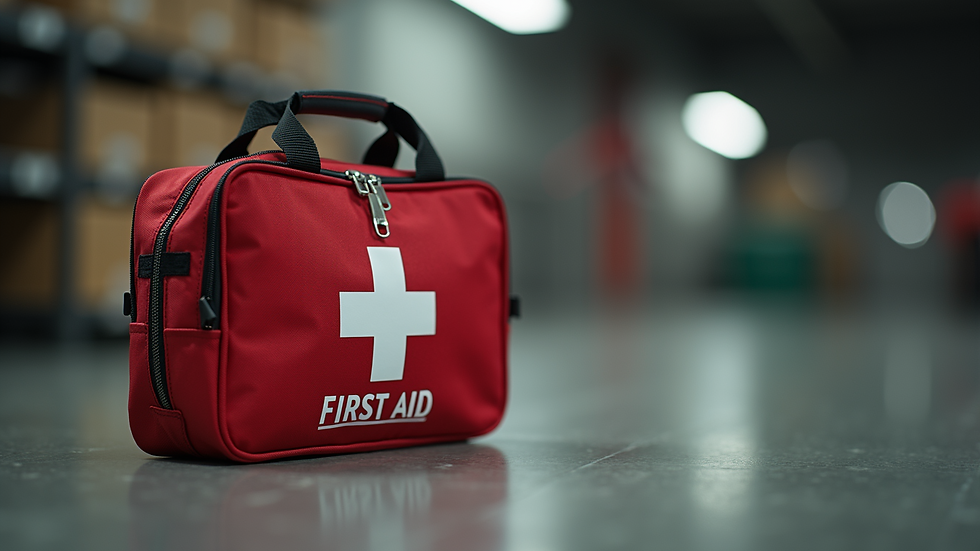What to Expect from CPR Training Programs
- kisercpr
- Aug 7
- 3 min read
When it comes to learning life-saving skills, CPR training programs are essential. These courses equip individuals with the knowledge and confidence to respond effectively in emergencies. Among the most trusted providers is the Red Cross, known for its comprehensive and accessible training. This article explores what you can expect from Red Cross training CPR programs, helping you understand the process, benefits, and practical details.
Overview of Red Cross Training CPR Programs
Red Cross training CPR programs are designed to teach participants how to perform cardiopulmonary resuscitation (CPR) and other vital first aid techniques. These courses are suitable for a wide range of people, from healthcare professionals to everyday citizens who want to be prepared in case of an emergency.
The training typically covers:
Recognizing cardiac arrest and other emergencies
Performing chest compressions and rescue breaths
Using an automated external defibrillator (AED)
Managing choking incidents
Providing care until professional help arrives
The programs are structured to be hands-on, allowing participants to practice skills on mannequins and receive feedback from certified instructors. This practical approach ensures that learners gain confidence and competence.

Benefits of Red Cross CPR Training
Certification: Upon successful completion, participants receive a certification recognized nationwide.
Flexibility: Courses are available in-person, online, or blended formats.
Expert Instruction: Training is delivered by experienced professionals.
Updated Curriculum: The Red Cross regularly updates its content to reflect the latest guidelines.
What to Expect During Red Cross Training
When you enroll in a Red Cross CPR training program, you can expect a well-organized and engaging learning experience. The course usually begins with an introduction to the importance of CPR and first aid, followed by detailed demonstrations.
Participants will:
Learn the science behind CPR and how it helps save lives.
Watch live or video demonstrations of CPR techniques.
Practice chest compressions and rescue breaths on mannequins.
Use AED trainers to simulate defibrillation.
Engage in scenario-based exercises to apply skills in realistic situations.
The training environment encourages questions and interaction, making it easier to absorb the material. Instructors often share real-life stories to highlight the impact of timely CPR.

Preparing for Your Training
To get the most out of your Red Cross training, consider the following tips:
Wear comfortable clothing suitable for physical activity.
Arrive early to complete any necessary paperwork.
Bring a notebook or device for taking notes.
Be ready to participate actively in hands-on practice.
Review any pre-course materials if provided.
How Long Does CPR Certification Last in Arkansas?
If you are taking CPR training in Arkansas, it is important to know the validity of your certification. Typically, Red Cross CPR certification lasts for two years. After this period, you will need to renew your certification to ensure your skills and knowledge remain current.
Renewal courses are usually shorter and focus on refreshing key skills and updates in CPR guidelines. Staying certified is crucial, especially for professionals who require CPR as part of their job requirements.
Renewal Process
Complete a refresher course offered by the Red Cross.
Demonstrate proficiency in CPR and AED use.
Receive an updated certification card valid for another two years.

Who Should Consider Red Cross CPR Training?
Red Cross CPR training is valuable for many groups of people, including:
Healthcare workers: Nurses, doctors, and emergency responders.
Teachers and childcare providers: To ensure child safety.
Workplace employees: Especially in industries with higher injury risks.
Parents and caregivers: To protect family members.
Community volunteers: To assist in public safety efforts.
Even if you do not fall into these categories, learning CPR is a responsible and empowering skill. Emergencies can happen anywhere, and being prepared can make a critical difference.
Final Thoughts on Red Cross CPR Training Programs
Enrolling in a Red Cross CPR training program is a proactive step toward being ready for emergencies. The courses are thorough, practical, and designed to build confidence in lifesaving techniques. Whether you need certification for work or want to be prepared for unexpected situations, these programs offer valuable skills that can save lives.
For those interested in taking a course, consider visiting the Red Cross CPR training website to find available classes and schedules. Investing time in CPR training is an investment in safety and community well-being.

.png)



Comments